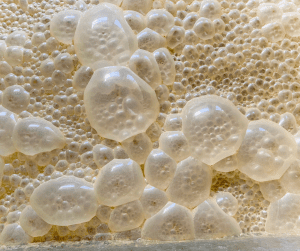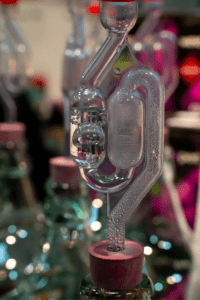We all understand the importance of malts and hops and fermentables in our brew. But yeast is certainly the unsung hero, turning those sugars into the beverages we love. This is truly the alchemy of brewing.
The Metabolic Process
While you’re cleaning up from your brew day, have you ever pondered, what *do* those yeasties do once I throw them in the fermenter? If so, here’s the short but scientific answer: yeast consumes simple sugars like glucose, fructose, maltose, and sucrose. Then, through a metabolic process known as glycolysis, yeast breaks down these sugars and produces energy in the form of adenosine triphosphate (ATP). The byproducts of this metabolic process are ethanol (alcohol) and carbon dioxide.
Esters and Phenols
But there’s more to it than just alcohol and bubbles. Yeast also produces secondary metabolites like esters and phenols. Esters are organic compounds responsible for many of the fruity aromas in beer and wine. They form when alcohols and acids within the yeast cells combine. The exact type and quantity of esters depend on various factors, such as yeast strain, fermentation temperature, and the wort’s composition. Phenols often contribute to the spicy, clove-like, smoky, or even medicinal notes. It’s a delicate balance … knowing about and controlling these factors can greatly influence the flavor profile of your brew.
Adaptability
Yeast is incredibly adaptable. They’re called “facultative anaerobes”, which means they can switch back and forth from aerobic (with oxygen) to anaerobic (without oxygen) environments. When introduced to a wort or must, with a good amount of oxygen present, they yeast begins its aerobic phase. In this phase, yeast primarily focuses on growing and reproducing, creating more yeast cells. It uses oxygen to metabolize sterols and unsaturated fatty acids, critical components for reproduction and building healthy cell membranes.
Once the oxygen is used up, the yeast transitions to the anaerobic phase. This is where the bulk of fermentation happens. Without oxygen, yeast shifts its metabolism to produce energy anaerobically, digesting sugars and resulting in the production of alcohol and CO2.
Oxygen and Nitrogen: Friends or Foes?
Oxygen, while essential in the early stages, can become a foe if introduced later in the fermentation process. Oxygen exposure post-fermentation can lead to oxidation and off-flavors, like the dreaded cardboard taste. So, once fermentation has started, minimize any further contact with oxygen for the rest of the fermentation and kegging or bottling process.
Nitrogen, on the other hand, is an essential nutrient for yeast. Present in the form of amino acids in malt, nitrogen is vital for yeast cell growth and metabolism. In brews with low nitrogen content, a nitrogen deficiency can stress the yeast, leading to incomplete fermentation or off-flavors. Ensuring that your yeast has sufficient nitrogen-rich nutrients on its way into the fermenter can be a game-changer, ensuring a smooth fermentation process.
Recognizing Off-Flavors
Have you ever experienced “off-flavors” in your homebrew, or maybe at a restaurant or bar? When yeast is not healthy or the fermentation environment is not just right, you may be able to smell or taste the chemistry going off the rails. For example, you may detect some of these yeast-related issues: green apple (acetaldehyde, from incomplete fermentation); butter (diacetyl, from poor yeast health); rotten eggs (hydrogen sulfide, from poor yeast health); sulfur (mercaptans, from poor yeast health or stressed fermentation); banana (isoamyl acetate, from fermentation temperature); medicinal/bandaid (phenols, from contamination or wort interaction); vinegar (volatile acidity, from yeast stress or extended lag before fermentation starts); or solvent/nail-polish (ethyl acetate, from poor yeast health or fermentation conditions).
Upcoming Events
Want to learn more? NTHBS will be hosting another off-flavors workshop in Spring 2024. And, super exciting, we have a surprise pro microbiologist lined up to talk specifically about yeast in the brewing process. Keep an eye out on our Events page for more info. We have an excellent book about yeast from Chris White and Jamil Zainesheff here. And check out our wide selection of beer, wine, cider, mead, and sake yeasts at our online store. (We have kombucha SCOBYs too .. a blog for another day!)
The Science and the Art
The fermenter is a bustling world of life and chemical reactions, all masterfully directed by our dear friend, yeast. It’s this microscopic powerhouse that gifts us the complexity, flavors, and joys of fermented beverages.
We hope this article helps you with a little science to improve your art. We would love to hear about your homebrewing experiences with yeast in the comments section below.
Happy Brewing!





